
The poet Liu Yuxi of the Tang Dynasty said in "Inscription on the Humble Room": "The mountain is not high, if there is an immortal, it will be famous. The water is not deep, if there is a dragon, it will be spiritual." The dragon is a magical animal in ancient Chinese legends, the totem of the Chinese nation, and the pre-Qin and Qin-Han dynasties. Common themes in paintings.
The "Character Royal Dragon" unearthed in Changsha City, Hunan Province is the earliest painting about Chinese dragons discovered so far. Together with the "Character Dragon and Phoenix", it is called the twin gems of pre-Qin painting art. The dragon is a very common theme in Han Dynasty portraits. The preference for dragon images stems from the Han Dynasty people's desire to control the dragon and become immortal.
In ancient classics, there are many records about ancient gods and men traveling on dragons. "The Classic of Mountains and Seas." "Overseas Nanjing": "Zhu Rong in the south, with the face of an animal and a human body, riding two dragons." "Dadaili·Five Emperors' Virtues": "Zhuan Xu rode a dragon to the four seas, reaching Youling in the north, Jiaozhi in the south, Ji Ji in the quicksand in the east, As for the flat wood."
Speaking of dragons in Chinese paintings, we must mention the "Characters Controlling the Dragon" from the Warring States Period. This is an anonymous ink and light color painting on silk created in the middle and late Warring States Period. It was unearthed in Tomb No. 1 of the Chu Tomb in Zanku, Changsha in 1973. When it was unearthed, it was placed flat between the coffin cover and the coffin. It is now collected in the Hunan Museum.

"Characters Fighting the Dragon" Collection of Hunan Provincial Museum
"Characters Riding the Dragon" depicts the scene of people ascending to heaven on a dragon. This non-clothing silk painting has a bamboo shaft at the top with a silk rope. It is a flag that can be hung vertically. It should be an inscription used in the tombs of the Chu State during the Warring States Period to lead souls to heaven. It is a non-clothing silk painting in the late Warring States Period. . In the center of the painting, a bearded man is depicted, standing upright with a long sword on his waist and a rein in his hand, driving a giant dragon. The dragon's head is high, its tail is raised, its body is flat, and it is slightly boat-shaped. There is a heron standing on the top of the dragon's tail. It has round eyes, a long beak, and feathers on top. It raises its head to the sky with a very cool and unrestrained expression. At the top of the painting is a canopy with three streamers blowing in the wind; in the lower left corner is a carp. In the painting, the canopy ribbons, the characters' clothes and the reins tied to the dragon's neck all move from left to right, showing the consistent direction of the wind.
The Qin and Han Dynasties inherited the idea of ascending to immortality from the Warring States Period, and were also influenced by the Five Elements and Yin and Yang theories. They were obsessed with seeking immortality and medicine, and seeking immortality. During this period, the distance between humans and gods was further shortened, and humans could even attain immortality. Dragons, as the "transportation vehicle" for immortality, also appeared more in the eyes of the general public.
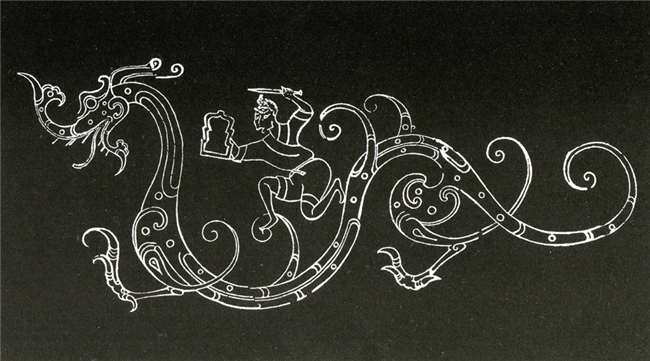
Han Dynasty portrait bricks, the dragon in the picture of a warrior fighting a dragon
The dragon pattern on the Qin Dynasty hollow bricks unearthed in Xianyang, Shaanxi Province is still the image of a snake. At present, the earliest discovered dragon pattern image that is closest to the dragon image imagined by modern people is the dragon that appears in the Western Han Dynasty tomb in Mawangdui, Changsha, followed by the dragon on the hollow brick of the Western Han Dynasty portrait in Luoyang. There are many scenes of feathered men playing with dragons and immortals riding mythical beasts in the Han Dynasty portraits of Shi Shengxian. According to an article related to the Luoyang Ancient Art Museum, the dragon-patterned bricks of the Han Dynasty come in two types: rectangular and triangular. There are two images of dragons on the bricks: one is the dragon in the picture of a warrior fighting a dragon, about 88 centimeters long and 40 centimeters high. This dragon has a slender body with an undulating shape, a rolled-up tail, and its body is decorated with long strips and circular patterns. There is a pair of long horns on the dragon's head, the tips of the horns are spiral-shaped, and the dragon's mouth is wide open, revealing a long tongue and six teeth. There are only two legs drawn in the picture, and the feet are in the shape of an eagle's claws with three claws. There is a warrior holding a dagger and shield on the dragon's back; the other is that there is only one dragon in the picture (Figure 2). The shape and posture of the dragon are very similar to the previous one, but there are some local differences. The dragon's horns are like ox horns, sharp and short, with no tongue. There are thin dragon whiskers under the dragon's neck, two cloud-shaped manes on the back of the neck, and a long barbed thorn on the front legs. The two dragons are usually printed on both sides of the same brick. The two dragons are one female and one male. The one with the warrior on its back is the female dragon, and the other one is the male dragon.
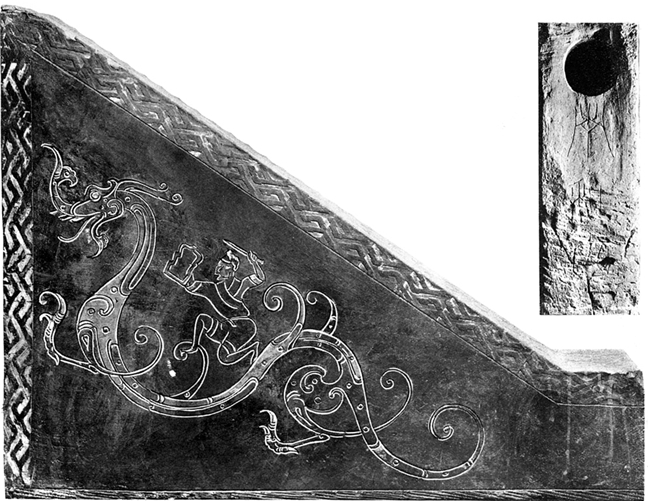
Han Dynasty portrait bricks, the dragon in the picture of a warrior fighting a dragon
The development of the Chinese dragon is divided into three phases: the first phase was before the Spring and Autumn Period. The main structural form of the dragon was a snake body and an animal head, in an S or C shape. It maintained the characteristics of reptiles and showed mysterious power. The second period is from the Warring States Period to the Tang Dynasty. This is the period when the shape of the dragon changes the most. The dragon changes from crawling to soaring, showing majesty and intimidation. Especially in the Han Dynasty, the dragon on the T-shaped silk painting unearthed from the Mawangdui Han Tomb in Changsha, Hunan is the most typical. A T-shaped painted silk painting from the Western Han Dynasty unearthed from Han Tomb No. 1 in Mawangdui, Changsha. The picture is "T" shaped, wide at the top and narrow at the bottom. It is 205 cm long, 92 cm wide at the top and 47.7 cm wide at the bottom. It consists of three single-layered paintings. Made of fine brown silk. The silk painting depicts three scenes: heaven, earth and underground from top to bottom. There is also a dragon shape among them.

T-shaped silk painting unearthed from Mawangdui Han Tomb
The lower narrow part of the silk painting is divided into upper and lower layers with jade as the boundary. The upper part is the human world and the lower part is the underground. The upper level is for the ascension of the tomb owner to heaven, and the lower level is for the worship of the tomb owner. The largest dragon in the whole painting is the "two dragons intersecting" that runs through the sky, the world, and the underground. The two dragons, one is cyan and the other is red, present a sense of upward movement.
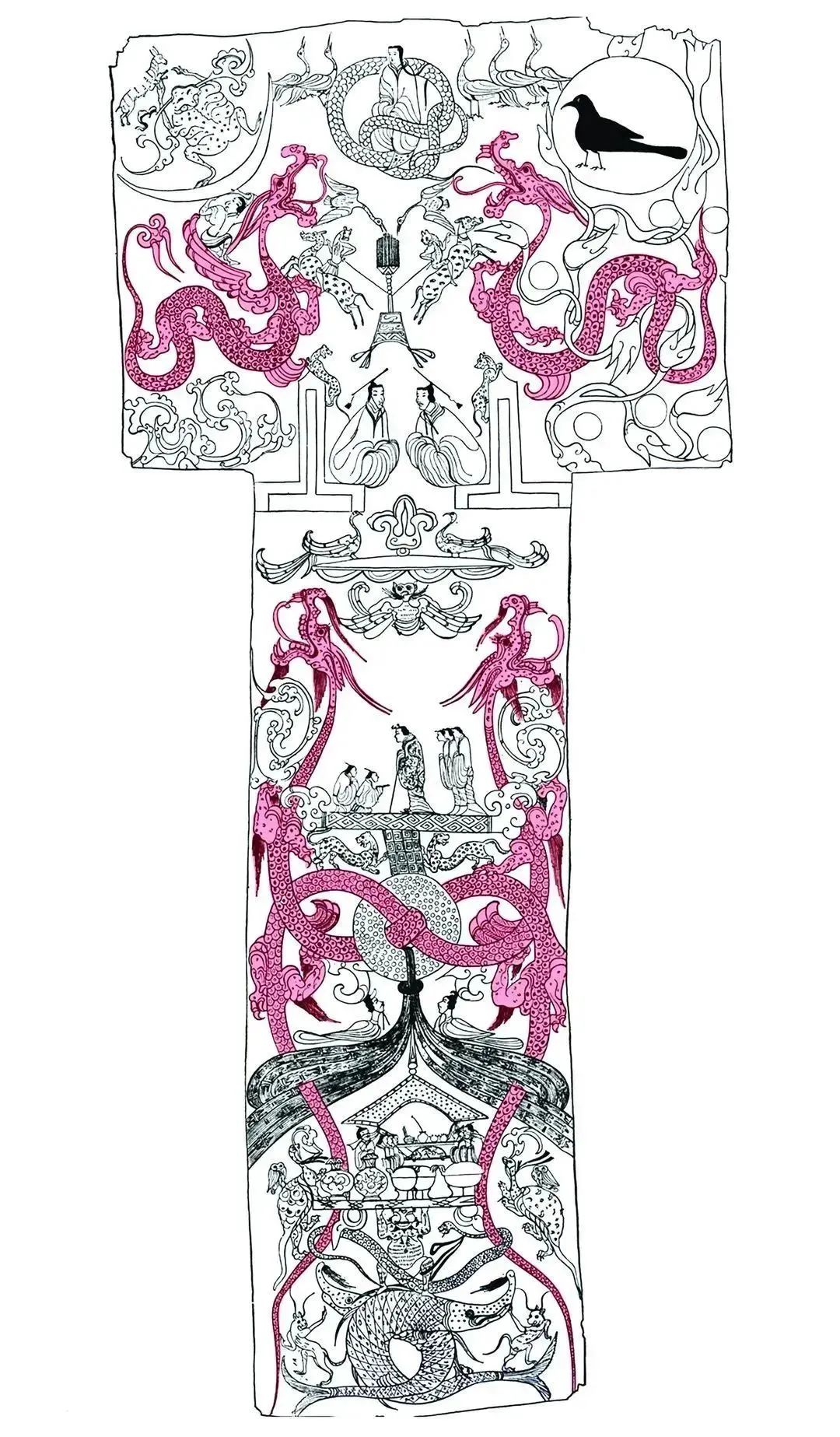
A dragon on a T-shaped silk painting unearthed from the Mawangdui Han Tomb in Changsha, Hunan. The picture is based on Zhou Tian's "Where there is a dragon, there is a spirit: Looking for the "dragon" in Han paintings"
The "Four Gods Clouds" unearthed from the Han Dynasty Tomb of King Liang Xiao in Mangdang Mountain, Yongcheng, Henan Province is a classic of Han painting. This painting is an early tomb mural of the Western Han Dynasty. It was unearthed in 1987 from the Shiyuan Tomb of King Liang's Tomb in Mangdang Mountain, Yongcheng, Henan Province. The mural is It is 5.14 meters long, 3.27 meters wide and covers an area of 16.8 square meters. Later, archaeological experts used scientific and technological means to cut the mural as it was and moved it to the Henan Museum, where it became one of the "Nine Treasures of the Town" of the Henan Museum.

"The Picture of the Four Gods and Clouds" of the Western Han Dynasty
The "Four Gods Clouds" mural uses cinnabar red as the background color, and uses white, green, black and other colors to depict various divine birds, animals and auspicious patterns. Among them, a giant dragon is particularly eye-catching. It is curved in an "S" shape and occupies the center of the picture. The dragon's body is about 7.5 meters long. The dragon's tongue wraps around the tail of a monster. The dragon's body is covered with scales, and there are wings on its back. Its feet are on clouds and long branches of flowers. The monster caught in the dragon's tongue has a duck's bill, a long neck and a fish body. Its body is covered with fish scales and has wings on its back. The white tiger below has its front paws clinging to the fairy mountain, holding a long flower in its mouth. The long beak of the red bird above pecked a long horn on the dragon's head, and its long tail was flying in the air. The murals are surrounded by straight lines and cloud patterns. This mural shows the images of the four sacred beasts in ancient Chinese mythology - Qinglong, White Tiger, Suzaku and Xuanwu, as well as various auspicious patterns and decorative patterns. It is one of the important representatives of ancient Chinese art and an important material for studying ancient Chinese culture and history.
"The Picture of the Four Gods and Clouds" is the oldest and highest-level tomb mural treasure discovered in China. Because of its age and exquisite workmanship, it has been praised by Chinese and foreign experts and scholars as "Dunhuang before Dunhuang" and "Dunhuang beyond Dunhuang".
During this period, the image of dragons has been relatively complete and mature. They are generally four-legged, with claws, scales, horns, and beards at the mouth. Most of the dragon shapes are similar, and the dragon patterns of this period have simple and powerful artistic characteristics.
The dragon in the Han Dynasty has multiple identities as a divine object and mascot. It can not only reach the sky and see gods, but also bring good luck to people. Therefore, it has become one of the "four spirits" of auspicious animals in people's minds. "Book of Rites·Liyun" says: "What are the Four Spirits? Lin, phoenix, turtle, and dragon are called the Four Spirits." Although the Four Spirits have a general name, they are rarely combined in one picture on the Han Dynasty portrait stones and portrait bricks. The most common ones are dragon and phoenix together, or lin and phoenix together, and most of them are separate shapes.
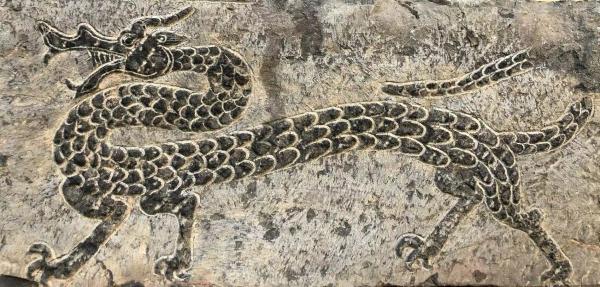
Xuzhou, the dragon in the Han portrait stone. Photo from The Paper
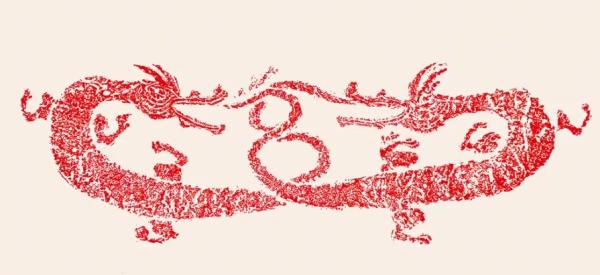
Nanyang, double dragons in Han Dynasty stone rubbings
Among the Han portrait stones in Xuzhou, Nanyang and other places, Long Diyuan used the stone slab as the canvas and the knife as the pen to carve exquisite pictures. The dragon images on the Han Dynasty stone statues are in various poses and have distinctive features in artistic expression. Some dragons are vigorous and powerful, soaring into the clouds and mist, as if they are about to break through the sky; some dragons are majestic and solemn, with wide eyes, showing an inviolable aura of kings; some dragons appear accompanied by mythical beasts such as phoenixes and unicorns, and appear together. Interpreting mysterious mythical stories.
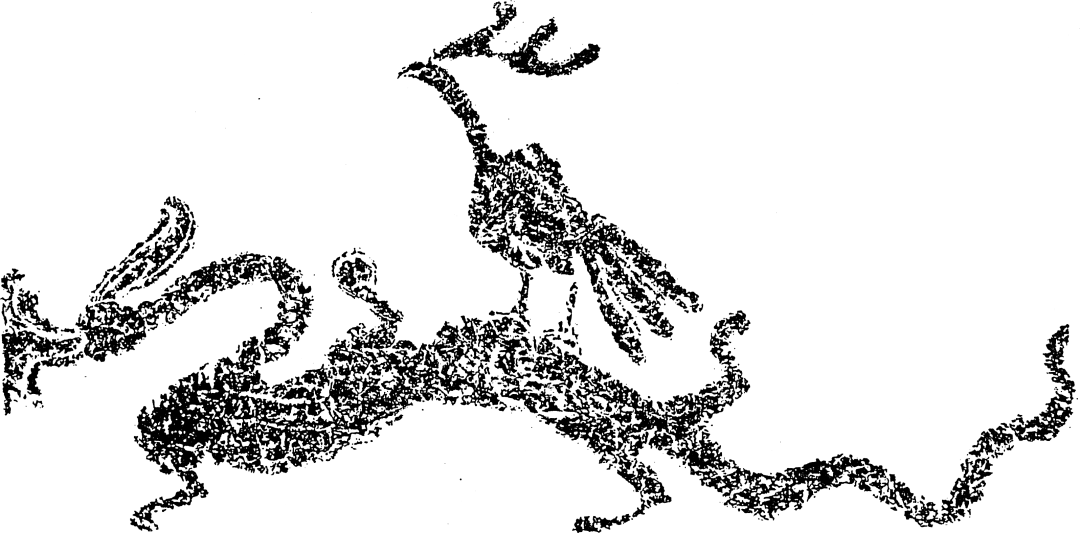
Dragon and Phoenix Rubbings Collection from Tongshan, Xuzhou, Jiangsu. Photos from "Stories of Han Painting" (Zhonghua Book Company)
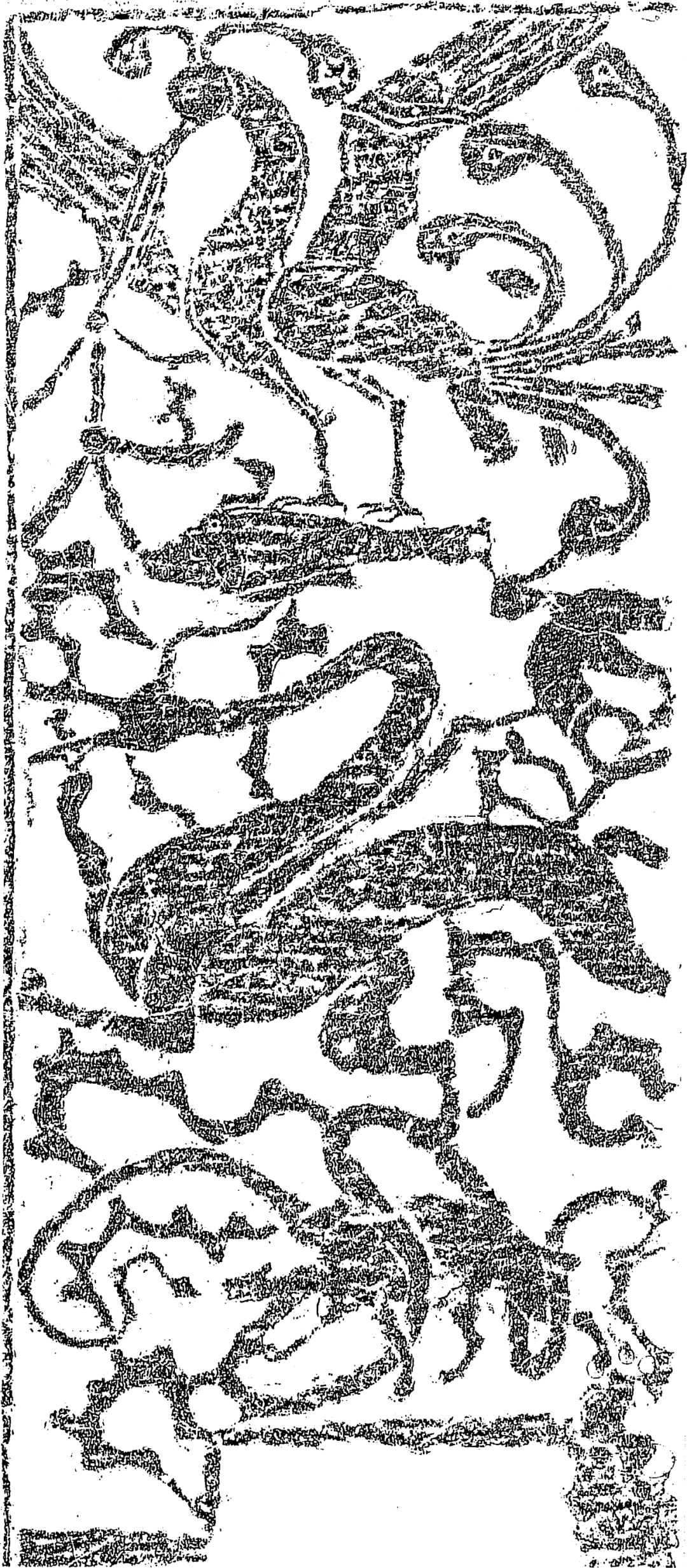
Rubbings of the Four Gods unearthed from the Han Tomb at Nanguan (Knitting Factory), Tanghe County, Henan Province. Photos from "Stories of Han Painting" (Zhonghua Book Company)

Huanglong rubbings unearthed from Wu's Temple in Jiaxiang County, Shandong Province. This is a woodcut copy of "Jinshisuo". The picture is from "Stories of Han Painting" (Zhonghua Book Company)
According to Zhou Tian's "If there is a dragon, there is a spirit: Looking for the "dragon" in Han paintings", there are many kinds of dragons, but there is no precise classification, especially in plastic arts, it is difficult to distinguish them clearly. The so-called "Huanglong" can only be distinguished based on the description in the literature. Qinglong, also known as "Blue Dragon", represents the east and later became the god of the east. The characteristic of Yinglong among the dragons is that it has wings. Its contribution in mythology is to help Yu control floods, draw the ground with its tail, form rivers, and make water flow into the sea. He also assisted the Yellow Emperor in killing Chi You, which enabled the Yellow Emperor to win the war against Chi You.
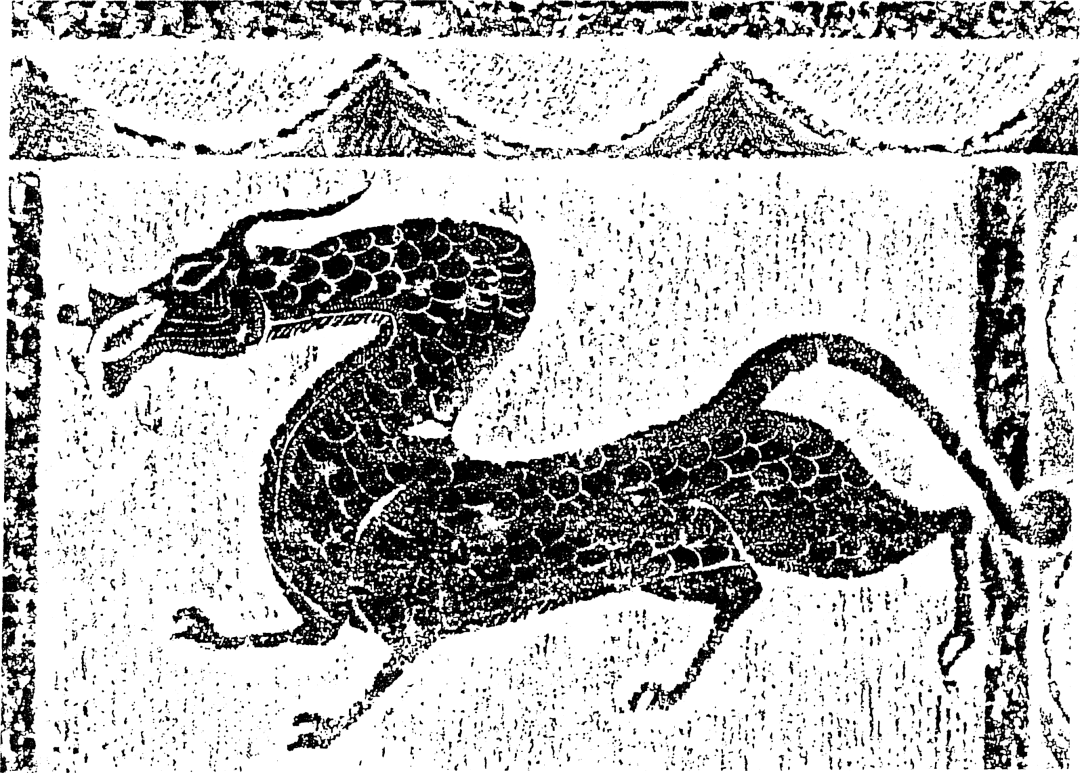
Qinglong rubbings unearthed from Wu's Temple in Jiaxiang County, Shandong
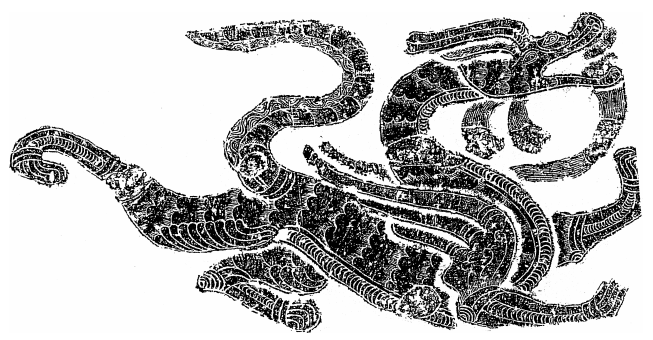
Yinglong rubbings unearthed from the Han Dynasty Tomb at Wubaizhuang, Linyi, Shandong. Pictures from "Stories of Han Painting" (Zhonghua Book Company)
According to "Where there is a dragon, there is a spirit: Looking for the "dragon" in Han paintings", on the stone portraits of the Han Dynasty, the types of dragons can only be roughly judged. For example, many dragons are carved with wings, but the wings come in different sizes. The one with big wings is called Yinglong. If it is together with the white tiger, it is called Qinglong. In the minds of the ancients, ascending to heaven can lead to immortality, and all the troubles and sorrows of the world will be resolved. It can be said to be the highest treatment and enjoyment. Emperor Wu of the Han Dynasty lamented in Chapter 9 "Sunrise and Entry" of "Song of Suburban Sacrifice" that the sun and moon come and go endlessly, but human life span is too short. He would like to ride on a dragon to ascend to heaven, but why doesn't Zihuang come? Ying Shao's note says: "Zihuang, a person who rides on the yellow, has dragon wings and a horse body, and the Yellow Emperor rides on it to become immortal. Emperor Wu wanted to get it, and said: 'Why don't you come here?'" It can be seen that the "dragon" here is a horse. The horse that can transform into a dragon is named Zihuang. We can also see this image of the Yellow Emperor accompanied by a divine horse on the Han Dynasty stone statues.
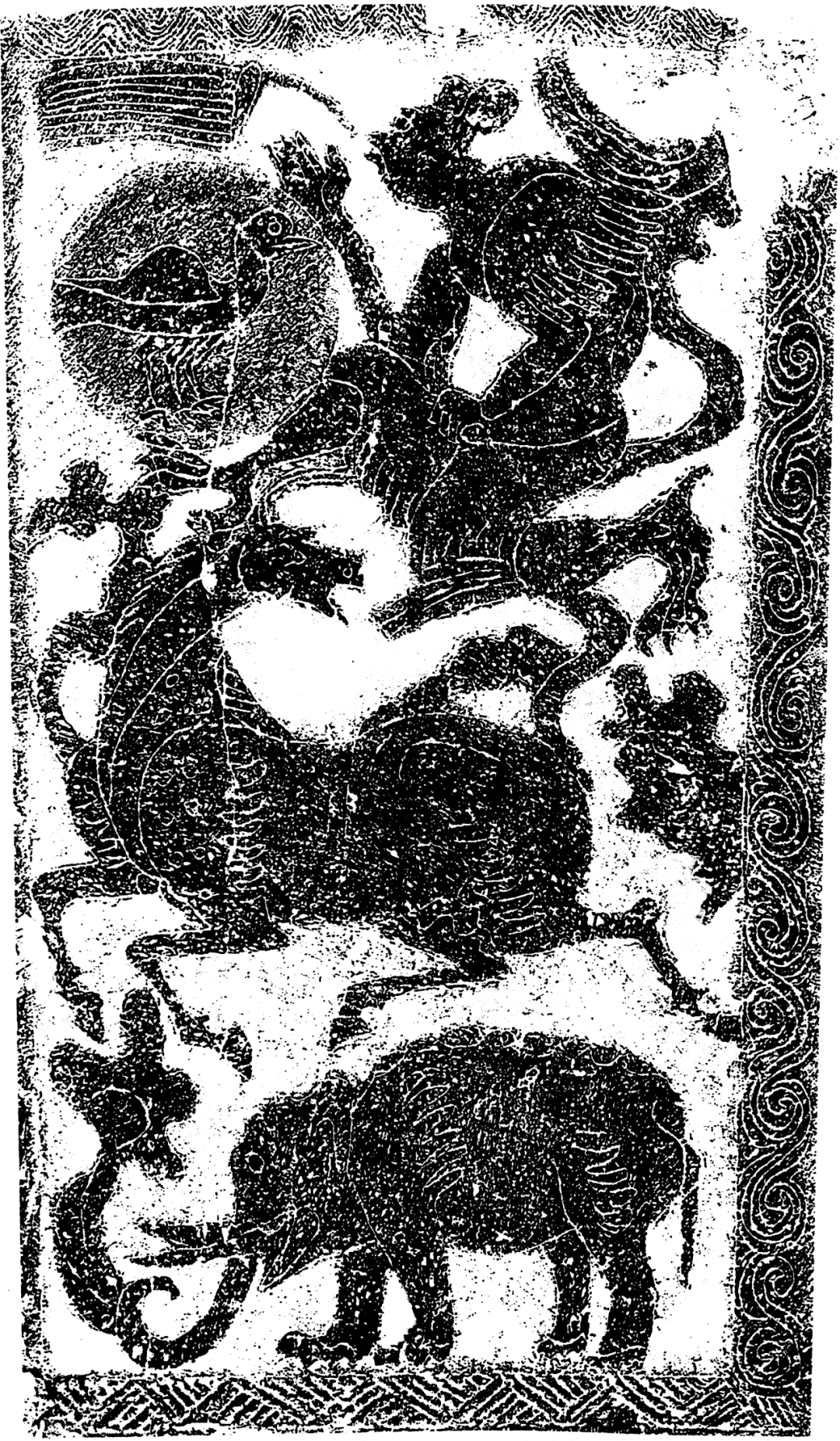
The Ascension of the Yellow Emperor to Immortality. Rubbings unearthed from Han Tombs in Miaoshan, Xuzhou, Jiangsu. Photos from "Stories of Han Paintings" (Zhonghua Book Company)
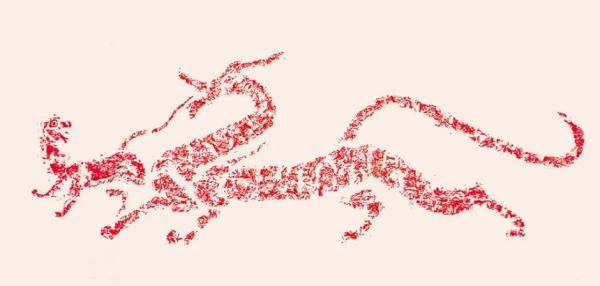
Rubbing of Nanyang Han Dynasty Painting "The Dragon and the Tiger"

Nanyang Han painting "Walking Dragon" rubbing
(This article cites "Figures of Figures Fighting Dragons", Mawangdui Han Tomb Silk Paintings and other relevant literature and materials, as well as Zhou Tian's "Dragon is Spiritual: Looking for the "Dragon" in Han Paintings", "Oriental Morning Post·Art Review" Xu Chanfei's column and other related materials. tidy)
